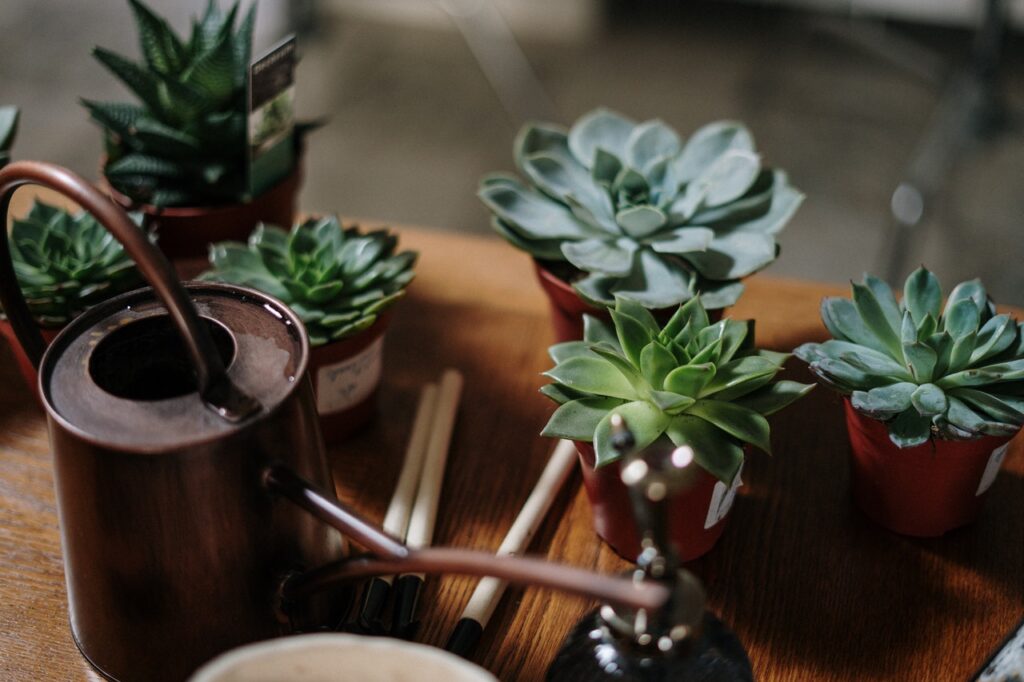Succulents are fairly unpretentious plants in terms of care. They can grow on almost any window, without the need for excessive care. But still, sometimes a succulent needs a transplant or trimming. If the plant curls, dry, and refuses flowering – it needs to be trimmed. This will help save the plant from disease and overgrowth. However, you must know how to do it. So, how to safely trim succulents without damaging the plant?
Succulents And Their Cultivation

Succulents are not cacti although they are grown similarly. Succulents still preserve the leaves – which, in addition to storing water also perform photosynthesis. There are succulents, especially from the genus Euphorbia – whose bodies are similar to some species of cactus. But that’s just the first look. The succulents we grow in our collections come mainly from Africa, South, and Central America, areas with a lot of sun and light. Some of them tolerate the strongest sun – while some seek shade. Succulents can last a long time without water, even longer than some cacti. In winter we protect them from freezing. For some, a temperature of 5 C is sufficient – while others prefer to overwinter at a temperature of around 12 C. The most beautiful and most valuable are those collections – in which, in addition to cacti, there are also succulents.
Trimming Succulents And Cactuses: How To Do It?
Trimming of these plants is possible – and in some cases, it is simply necessary. These plants can be cut and re-rooted for a variety of reasons. We do this in the following situations:
- The plant begins to rot.
- The shape changes, the plant is very distorted.
- The succulent is strongly grown and elongated.
We must note that these plants get sick due to unprofessional care, pests, or inappropriate treatment. Warm winters, excessive watering, or lack of light can seriously weaken the plant – or reduce its ability to resist diseases and pests. To prevent this, we suggest you read how to properly nurture and prune these plants – and which place is better to choose to accommodate your green friend. One of the best ways to learn how to successfully grow succulent plants is to take a look at the Succulent Market – where you can get advice from more experienced breeders, especially if they are rarer species or those that are ‘difficult’ to grow.
How To Know That The Trimming Is Necessary?

Several external signs make it possible to understand whether the top of a plant can be cut off:
- The succulent skin turned yellow and stopped glowing.
- The plant died.
- The plant squinted to one side.
- Stains appeared on the trunk (wet, dry, different colors and structures from the rest of the plant).
- Rising and falling in the growing season.
- The plant has become too long, heavy, and threatens to overturn the pot.
Trimming Succulents Without Damaging A Plant
The following plan describes how to trim succulents at home.
- Select the parent plant to be pruned. If the length of the plant exceeds 15 cm – start pruning immediately from the canopy. If the plant is small – remove it from the ground first – it will be easier to make a careful cut.
- Disinfect the knife and, capturing the plant – and carefully cut out the desired part. The bigger the cut, the better.
- Examine the section – the tissue should be healthy, without lesions.
- Treat the cut part of the plant with powdered charcoal – the powder will absorb the bulging juice.
- Leave the cut part of the plant in a dry place, out of direct sunlight. The drying time is 1 to 4 weeks. The stem is best dried vertically.
- Next, you need to put the cut part of the plant on the ground (you can’t drive the shoot into the ground, it can rot) – and plant a few stones for stability.
- Place the pot in a sunny spot and wait for the roots to appear.
For a month, just spray the plant occasionally – and inspect it regularly so it doesn’t rot.
What If The Plant Dies After The Procedure?

If the plant did not recover after pruning, and rot and mold reappeared on the stem – you will have to prune the plant again. It is performed in the same way as the previous ones – the plant is cut with a clean knife, sharpened in the shape of a pencil, and placed to dry. When pruning, carefully clean the affected tissue, Even small foci of infection will lead to the recurrence of the disease. If you take into account all the factors that affect the development of succulents, you will achieve that the plant will regularly delight you with its growth.
Light
Most cacti and other succulents look for as much light as you can provide. Thus, the south or southeast side of a wall, greenhouse, or terrace is an ideal position. Usually in such positions, the choice of plants is limited by the lowest winter temperature. A lot of sunlight is a prerequisite for the plants not to become deformed and to bloom. Although these plants grow in nature in intense light – they can still adapt to slightly lower intensities. You should take special care that the plants do not get “burns” during the first sunny days of spring after the dark winter.
Watering

‘How much water should I give them?’ – the most common question when growing cacti and other succulents. The answer to this question is not so simple because it depends on several factors. During the growing season, succulents should not be left without water for a long period of time. During the summer, when it is very warm, water the plants once a week or once every five days. When the weather is colder, extend the intervals between waterings. During the winter, these plants rest so that they do not need water or they need very little. If you keep the plants in the room next to the window where it is heated during the winter – it is still necessary to water them occasionally. The best watering is clean rainwater – with the addition of some liquid supplements during the growing season. Never leave plants submerged in water for long periods of time. This will almost certainly be detrimental to your plants.








